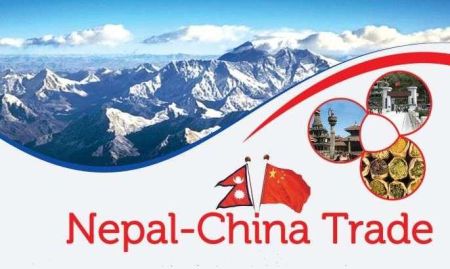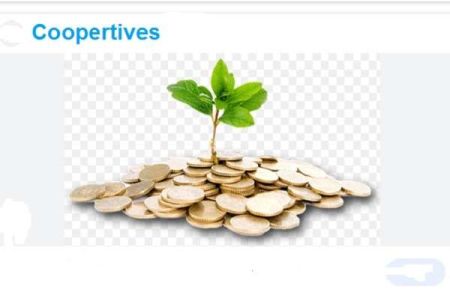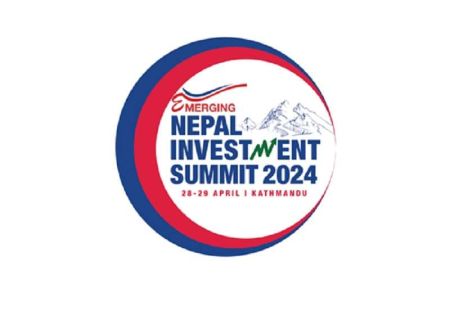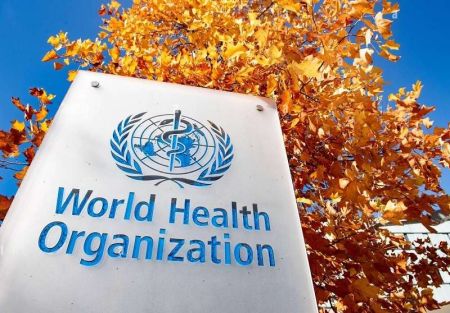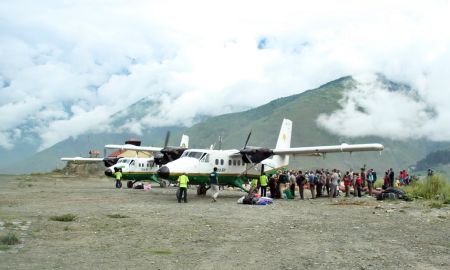.JPG)
Khadga Bahadur Bisht is the president of Independent Power Producers' Association, Nepal (IPPAN). Holder of Master of Engineering (ME) in Energy Economics & Planning from AIT Thailand, he has over 25 years experience in power sector in different organizations including Nepal Electricity Authority; Asia Pacific Energy Research and Publications Pte Ltd, Vattenfall Sweden; Swed Power Thailand; Nordic Hydropower, Laos; among others. Recently, he spoke to Siromani Dhungana of New Business Age on problems and prospect of Nepal’s hydropower sector. Excerpts:
As the President of IPPAN, how do you assess the situation of hydropower development in Nepal?
Load shedding situation even during monsoon illustrates our snail-paced hydropower development but there are around 1200MW equivalent of project under construction, mostly for domestic use, and PDA for large projects are in final shape. Moreover, our proposal on power trade agreement is taken positively by India and extremist views on hydropower development are gradually swept aside. The situation is improving and within coming 3-4 years we will see Nepal having mostly light-hours than dark.
Hydropower Sector in Nepal is said to be in deep trouble due to various impediments. Can we remove obstacles?
I would not agree with the qualification "deep trouble". Yes there are impediments, there are structural barriers. The power sector needs to be reformed, we need to establish a national power transmission authority and system operator that takes care of 220 KV and above transmission line and does non-discriminatory dispatch. The private sector should be given the responsibility of developing shorter transmission line.
NEA should remain as it is today but all future hydropower generation should be only through a Single Purpose Vehicle (SPV) model— similar to Upper Tamakoshi which is financed under a commercial basis. Upper Arun, Tanahu Storage, Budhigandaki storage should be also done in a SPV model and a PPA should be done with NEA so that people and country know what is the actual cost of power generation. Budhigandaki should be started immediately with the line of credit that Indian Prime Minister Narendra Modi had announced during his last visit.
We need to enact Electricity Bill within this year and pave the way for an independent sector regulator. Further, we need to empower water and energy commission secretariat to carry out planning and research projects in water and hydropower and we need to increase capital base of hydropower investment and development company (HIDCL) and push it to increase investment in projects.
Ministry of Energy is well aware about this and obstacles can be removed if there is a will.
Hydropower sector has been suffering from the problem of over politicization. How do you view this?
Yes it was, but consensus is visible now. Last election manifestos of all parties show their commitment in hydropower development. Gap is narrowing down on the basic principles of how hydropower development can be done. Few years back export of electricity was a political issue, today all parties have agreed to it and it is a commercial issue. But having said this, there still is petty politics on hiring staff, appointing employees based on political favour etc. We have to move from this traditional set-up towards free competition and merit based appointments for all top positions of state enterprises.
Nepal’s private sector often talks about attracting foreign investment in hydropower sector. IPPAN even organizes international seminars to lure investors. What strategy should we adopt to get regional cooperation in Nepal’s water resource development, especially the hydropower export?
IPPAN did many road shows, especially Power Summit, for luring investors and, as a result, there are many international investors in Nepal. I think the tempo was there until 2008 when the global economy slumped and many large international investors went through difficult economic times in their home countries. Added to it was the constant change of faces in Nepali politics and bureaucracy. As the consequence, PDA negotiations have remained inconclusive since the past three years.
Nepal seems to have got back on track in the aftermath of second Constituent Assembly elections in November 2013. Now it’s time for us to complete PDA for projects and sign power trade agreement with India immediately. We should immediately work on financing second cross-border line and start planning the third cross-boarder transmission line.
We should push for regional energy market and market integration in the upcoming SAARC summit. So that we will have a South Asia Power Pool by 2016-17, at least among Bangladesh, Bhutan, India and Nepal. Once we have physical interconnection and market mechanism, the buyers and sellers themselves will work on the market transactions and pricing, based on demand and supply.
Nepal and India could not sign the PTA agreement during Indian PM’s recent visit. But both countries have agreed to sign it before the SAARC summit. Do you think it is possible?
As usual, Nepal was a bit slow in reacting. Initially the draft from India and Nepal was kept confidential but suddenly everybody knew it, making it a open-secret. The disclosure became a big credibility issue. Hence, I think it was our weakness for being unable to sign the PTA when Prime Minister Modi was in Nepal. I think it will be signed well before the 45 days commitment, provided that all stick to their commitment.
 What provisions IPPAN wants to be included in the PTA?
What provisions IPPAN wants to be included in the PTA? Our views are very clear; we are talking about the transaction of electricity that flows through transmission line, which has nothing to do with the water. We have sent our written recommendation to the ministry as:
1. Open and non-discriminatory access including access to Indian electricity exchange market
2. Permanent removal of taxes, duties, quota, licenses, permits etc.
3. Non-discrimination on who is developer in Nepal
4. Access to third country through India
5. No single designated nodal agency for exporting/importing power
6. Electricity prices to be determined by the market
7. Cross border lines to be developed in joint coordination
8. For settling disputes and coordination a joint regulatory body/committee to be established in future.
I think these are fair and globally accepted power trading norms that are used in all integrated power pools around the world.
Power developers have been facing the problem of higher interest rates, which make the implementation of hydropower projects financially unviable. How do you observe the situation and what could be the way out to these problems?
Rather than higher interest rates, I think fluctuating interest rate brings tremendous risk to project financing. We should use more and more long-term fund rather than the bank's commercial loan, which are mostly backed by short-term deposits. In the initial phase many countries had financed power and infrastructure projects though special industrial investment institutions such as NIDC, HIDCL or through a long term bond such as from IFC and ADB.
One major problem cited in the development of hydropower in Nepal is the lack of capital. How can we address this problem?
All developing countries and especially Newly Industrialized Countries (NICs) of South East Asia brought a lot of Foreign Direct Investment (FDI) in the early stage of their development. We should choose a similar path rather than re-inventing wheel. For most of the domestic consumption, short-term domestic capital is enough and for large projects we need FDIs.
Dollar PPAs are cause of concern in Nepal because NEA says it loses money from Khimti and Bhotekoshi PPA. What is your view on this?
An investor investing in US dollar, Euro, Korean Won or Indian rupees would in most case demand revenue in the same currency or a convertible currency such as US Dollar. Foreign investor wants dollar PPA to meet their rate of return through steady and predictable revenue. Unlike fast moving consumer goods (FMCG) such as electronics, shampoos, chocolate, cigarettes, edibles etc. whose prices are regularly adjusted based on market demand and supply and cost of production, electricity purchase prices are long term, non-transferrable and locked for a long period. Hence, you need a stable currency. So, rather than castigating Dollar PPA, we should be able to set a mechanism for exchange risk-sharing when doing PPA with foreign investors. NEA has also said it wants to set up a mechanism for dollar PPA.
Bhutan and Laos have benefitted enormously through hydropower development and its export. But some people have argued that Nepal cannot get benefit by following these models. Which model should Nepal follow?
I do not think Bhutan or Laos Models are any proven economic models. Based on these countries geo-political situation and economic conditions, they chose a certain path and are successful. If you ask a government official from Laos Energy Ministry he does not know Laos Model. It is useless to argue whether they are good or bad. We are very similar to what Laos is doing and for a foreseeable future we should learn from what Laos did. They have large export of energy but their electrification increased from 12% to 80% in 7 years. All are BOOT model projects. So, within couple of years they will be returned to the government. All projects in Laos are built under a commercial SPV and BOOT model. In the early years, Laos gave 26% rate of return to foreign investor but now as the installed capacity increased they give only 13% rate of return on investment.
Some experts say that electricity should not be traded and used for Nepal only as no country becomes rich by selling natural resources. Storage project should not be built until lower riparian benefits are also shared by Nepal and no PDA should be done in a hurry. What are your opinions on this?
Nepal has taken conscious choice to develop Nepal's hydropower with two objectives: 1) provide reliable, affordable and sustainable electricity supply to meet demands of Nepali people and, 2) develop large quantity of hydropower potentials for export revenue generation in the shorter term and ultimately utilize energy for industrialization and sustained economic growth.
Now, these objectives are not one-after-another but together. In a shorter term we will have mostly residential and commercial demand and when country industrializes we will have more industrial consumption here. So, exporting power now is a need rather than a choice. I have also heard the argument not selling to India and that the country does not get rich by selling resource. I think they are anti-thesis, run contrary to global economic phenomenon. Russia has recently made a deal with China to sell 400 billion dollar equivalent of natural gas, Saudi Arabia sells 320 billion dollar of petroleum each year, Indonesia is 7th largest natural gas exporter. Had these countries not sold these products, and other countries minerals, we would be in Stone Age. Even 100% hydropower country Norway sells around 30 billion dollar equivalent of natural gas and around 140 billion dollar of petroleum. Such arguments have no valid ground.
Now, trying to obtain lower riparian benefit from storage project is a great idea but then we cannot wait for eternity if we do not get a price of that water. It would be like walking in dark by putting off light because neighbour also benefits from it.
Of course, PDA has to be signed, Government has made a commitment with international bidder in 2008 and signed a memorandum of understanding. It cannot now just walk away.
Construction of cross-border (Nepal-India) transmission line has been elusive. What is your opinion on this?
I think construction of the first cross-border transmission line—Dhalkebar-Muzzaferpur Line—is progressing well. The second transmission line—Bardaghat – Gorakhpurline— is ongoing. It is really not elusive. All will fall in right place, we just need to keep pushing it.
What other legal and administrative hurdles are there in developing a hydro project?
We need to enact new Electricity Act. We do have problem with harmonization of laws and Acts that facilitate project development. We have seen continuous changes in licensing mechanism. it should be based on a competitive bidding, where all the studies are done by the government. A maximum bid price is indicated and all bidders are requested to propose the lowest price per unit. This is similar to what South Africa has done.
What challenges and opportunities do you see in Nepal’s hydropower sector?
I have already said about numerous challenges but the opportunity for us is a Nepal having at least 43,00MW installed capacity twenty-five years from now. K. Natwar Singh, former Indian Minister for External Affairs, once said, "I am a short term pessimist and a long term optimist". I concur with him in assessing the present situation. We are on the right path and I am hopeful that, one day, other countries will talk about Nepal Model, too.
Lastly, do you have any suggestions for state agencies and the stakeholders related to power and water resources sector in Nepal?
Ministry of Energy has been very positive with private sector in the present days and this has been reflected in the budget and policies. We should make Water and Energy Commission Secretariat (WECS) as the main think tank. The government should immediately establish power transmission authority, power trading company and a strong project progress monitoring and facilitation unit. Energy Ministry is very positive on this and now we should act fast.






